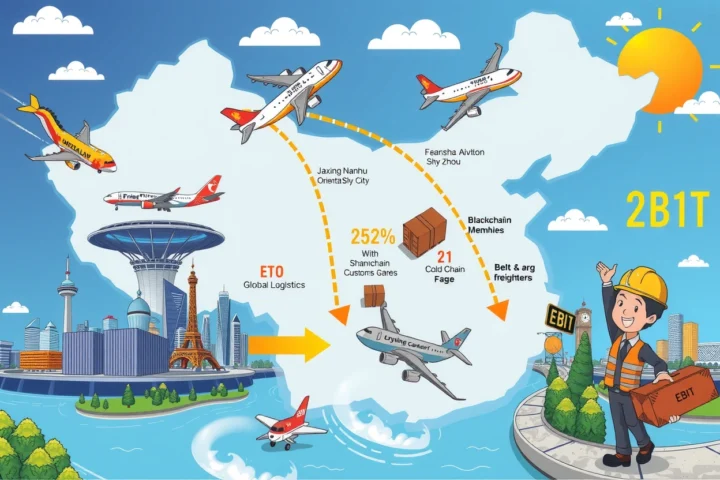The Unseen Catalyst
China’s economic landscape is undergoing a subtle revolution. Far from headline-grabbing announcements, Beijing has orchestrated a multi-pronged strategy to bolster private enterprise growth. These quiet yet profound changes signal a strategic pivot: Private enterprises now form the cornerstone of China’s ambitions for sustainable development. From manufacturing hubs in Guangdong to tech incubators in Hangzhou, entrepreneurs report smoother regulatory navigation and renewed policy support.
Regulatory Reforms Redefining Business Terrain
Since 2020, over 1,200 provincial-level regulations have been revised to support private enterprise operations. The “Notice on Supporting Private Economy Development” quietly eliminated barriers across 18 key industries.
Streamlined Market Entry Protocols
New automated licensing platforms reduced business registration time from 30 days to just three. Key reforms include:
– Single-window digital portals for 92 administrative procedures
– Cross-departmental approval reciprocity across all provinces
– Pre-compliance certification systems for startups
This regulatory dismantling illustrates Beijing’s commitment to lowering the entry threshold. Private enterprises report 40% faster market entry than just two years ago, according to the China Entrepreneurs Survey System.
Tax and Compliance Innovations
Decentralized taxation empowers local governments to offer targeted incentives:
– VAT reductions for R&D-intensive firms
– Five-year tax holidays for green technology ventures
– Compliance credits replacing penalty-centric oversight
The Ministry of Finance’s latest pilot program allowed 4,000 private enterprises to defer tax liabilities, boosting cash flow during critical growth phases.
Capital Injection Mechanisms
Beijing’s orchestrated credit expansion unlocks private sector potential without traditional stimulus fanfare.
State-Backed Financing Platforms
Provincial governments launched specialized lending windows increasing private enterprise loan approvals by 33%:
– Guangdong’s Innovation Fund offers collateral-free loans up to ¥20 million
– Zhejiang’s Tech Growth Bonds underwritten by provincial treasuries
These mechanisms specifically target manufacturing upgrades and AI integration among private enterprises. The quiet capital surge generated an estimated ¥4.6 trillion in new investment last year.
Equity Market Reorientation
Shanghai’s STAR Market allocated 70% of new listings to private enterprises. Measures to enhance private enterprises’ capital access include:
– Fast-tracked IPO approvals for tech unicorns
– Reduced profitability requirements for strategic sectors
– Cross-border investment schemes with Hong Kong exchanges
As reported by the China Securities Regulatory Commission, private sector listings increased 45% year-on-year.
The Digital Transformation Mandate
Beijing incentivizes technological metamorphosis through quiet policy levers. Private enterprises contributing to national tech sovereignty goals receive priority resources.
Smart Manufacturing Acceleration
Provincial “Digital Transformation Voucher” programs offset up to 30% of tech adoption costs. Industrial support includes:
– Subsidized access to national computing centers
– Cloud service credits for SaaS integration
– AI diagnostic platforms assessing upgrade pathways
A Ministry of Industry survey indicates precision manufacturers adopting automation saw 19% average productivity gains.
Phasing Out Analog Economy Friction
Infrastructure modernization greases commerce – new national logistics networks save private enterprises ¥140 billion annually in distribution costs. The National Development and Reform Commission’s smart logistics initiative demonstrates commitment to lowering operational friction.
Market Frontiers Expanding
Historic access barriers crumble as private enterprises inherit spaces from previous SOE dominance.
Sector-Specific Gateways
The “Negative List” shrinkage opened 67 previously restricted industries to major private companies:
– Satellite communications
– Renewable energy infrastructure
– High-speed railway components
As seen in China Railway’s landmark bid diversification, private enterprises now supply 38% of bullet train subsystems.
International Corridors of Opportunity
Belt and Road private enterprise participation surged following credentialing reforms. Success strategies involve:
– Utilizing new customs clearance platforms like Trade Single Window
– Accessing dedicated export credit insurance pools
– Joint ventures with SOEs for infrastructure bids
Trade data reveals private enterprise contributions to China’s project exports grew from 21% to 39% in five years.
Implementation Blueprint for Entrepreneurs
Government support depends on demonstrated strategic alignment. Chinese entrepreneurs excel by proactively engaging with new policy frameworks.
Compliance Optimization Tactics
Leading private enterprises establish government affairs divisions mapping incentives. Best practices include:
– Monthly policy bulletin analysis
– District-level partnership agreements
– Pre-submission consultations for major projects
Companies maintaining regulatory analytics report 28% faster approvals according to Peking University case studies.
Operational Integration Formats
Synergy filings—formal documents demonstrating how businesses advance national priorities—unlock advantages. Key alignments:
– Supply chain resilience contributions
– Carbon reduction timelines
– Provincial employment targets
A Shenzhen robotics manufacturer secured ¥800 million funding after linking production to Made in China 2025 milestones.
The Future Horizon
China’s approach projects sustained private enterprise support as Beijing balances innovation with control. The National People’s Congress recently approved extended commitment horizons until 2030.
First-tier city tech clusters already demonstrate this vision’s potential. Hangzhou’s algorithms now optimize Shanghai ports, while Guangzhou precision instruments power Xinjiang solar farms. Each handshake between private ingenuity and state resources reinforces mutual dependence.
Resource reallocation signals haven’t ceased—BRICS development banks recently established private enterprise supply chain facilities. These silent channels enable calibrated economic adaptation. Now represents an era of immense opportunity for aligned private innovation.
















